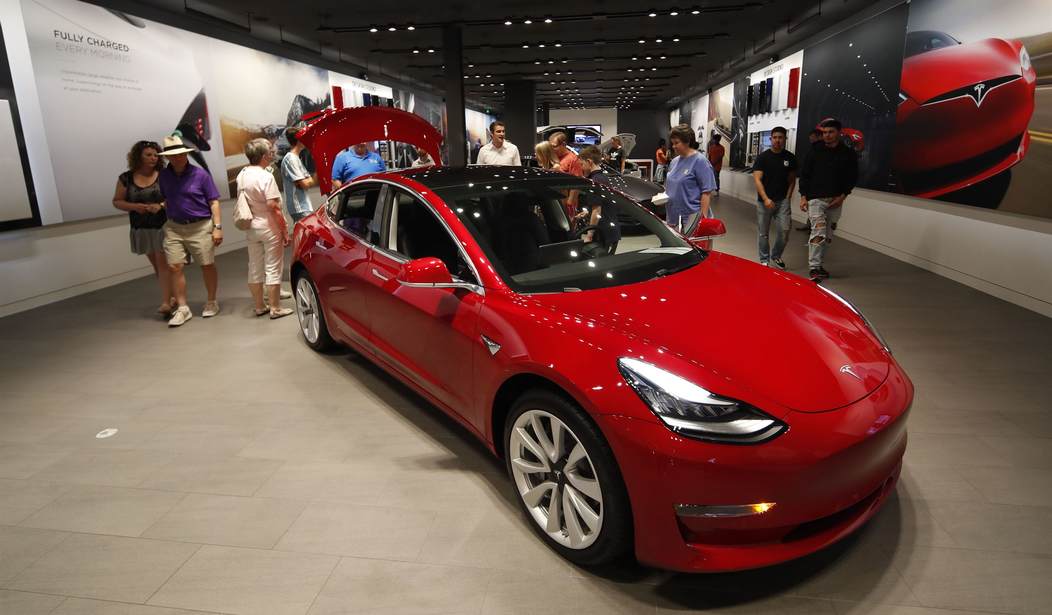So you got yourself a brand new, $70,000 subsidized electric vehicle (EV), and everyone on your block is envious. Quiet, non-polluting, cheaper to operate than a gas-powered vehicle, right?
That’s not entirely accurate. The grim fact is, you better pray your EV never breaks down. The electric vehicle manufacturers sort of forgot to train the necessary number of mechanics to service your beautiful new car, leaving you with repair costs that will be through the roof.
It seems like too obvious a detail to overlook. And it’s going to blow up the EV industry once a couple of millions of them are on the road.
EV’s are, it turns out, incredibly dangerous to work on. The electric voltage technicians work with could kill mechanics very quickly. Then there’s the fire hazard with EV batteries.
And the specialized diagnostic equipment needed to service EV’s is putting off most small, independent repair shops that experts agree are going to be needed to keep the cost of repairs and warranties down.
The auto repair industry has already been short of workers since the pandemic. The Institute of the Motor Industry (IMI) based in Hertford, England, develops automotive training courses and is currently rolling out EV courses across China and aims to do so in India and across Europe. It forecasts that Britain, with a 2030 fossil-fuel car sale ban, could be short 25,000 EV technicians by 2032.
In the United States, the world’s No. 2 auto market after China, EV sales growth has trailed Europe’s, but the Bureau of Labor Statistics predicts around 80,000 electrician jobs will be needed annually through 2031, which includes technicians to fix EVs or install EV chargers.
And Australia could be 9,000 EV technicians short by 2030, the Victorian Automotive Chamber of Commerce predicts.
Auto experts fear mechanics like Petrilli in Milan will simply avoid EVs – leaving consumers with higher bills and longer repair times.
The risk of injury is much higher when working on EVs than gas-powered vehicles. And the fear is that unqualified mechanics may be forced into performing work that would put them at risk.
Daniel Brown, head of automotive product development at Germany’s Lucas-Nuelle says, “it’s just a matter of time until someone gets hurt.”
The EV makers are already looking to the government to subsidize training programs for the smaller, independent repair shops who will stick to fixing gas-powered cars otherwise.
MTA NSW head of government affairs Collin Jennings said small repair shops will need subsidized EV training or many will likely stick to fossil-fuel models. The distances between many smaller Australian towns makes that a problem in the making.
“Who’s going to fix your Tesla if it breaks down there?” Jennings said.
The IMI is seeking 15 million pounds from the UK government to help independent repairers afford training, said CEO Steve Nash.
But Nicholas Wyman, executive director of the U.S. Institute For Workplace Skills and Innovation, said most repairers are on their own.
According to the House Ways and Means Committee, the government will be giving $398 billion in tax credits to purchase electric vehicles.
Electric vehicle tax credits will be a $393 billion (28 times the original estimate) taxpayer subsidy to automakers when taxpayers earning up to $300,000 a year buy from them. “Green” energy manufacturing credits are projected to cost upwards of $193 billion (over 5 times the original estimate).
Exclusively for our VIPs: Insanity Wrap: Nobody Wants to Buy Electric Vehicles Anymore — They’re Too Popular
The White House also brags that “President Biden’s Bipartisan Infrastructure Law invests $7.5 billion in EV charging, $10 billion in clean transportation, and over $7 billion in EV battery components, critical minerals, and materials.”
That’s more than $425 billion spent on EVs that won’t have anywhere near enough service people to keep them running.










Join the conversation as a VIP Member